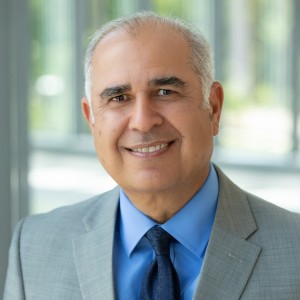What Is Electroconvulsive Therapy?
Electroconvulsive therapy, or ECT, is a treatment for individuals suffering from severe depression and other treatment resistant illnesses that have not responded to the more traditional psychiatric interventions of medications and therapy. It is a clinically safe and effective medical procedure that uses a brief electrical pulse to induce a controlled seizure in the brain. Though first introduced in the 1930s, the ECT provided today has improved greatly in its overall effectiveness, tolerability, and safety.
Much of the stigma around ECT came from the early forms of treatment where higher doses of direct current were applied. The use of anesthesia medications and ECT machines that allow for fine adjustments in dosing, as well as advancements in electrode placement, have dramatically improved both the efficacy and tolerability of ECT.
Though ECT does not have the ability to cure mental illness, it does have the potential to reverse the symptoms of severe psychiatric conditions. There is an 80-85% response rate for unipolar and bipolar depression. Most individuals will remain stable for months to years after an ECT series is completed; this is often in conjunction with other forms of treatment such as medications and therapy.
A small portion of patients might require another ECT series later in life or may require maintenance ECT. Many will have treatments spaced out every four to six weeks. For this group of patients, an outpatient psychiatrist is requested to directly supervise the patient and work in conjunction with our team.
What Does ECT Treat?
Conditions we treat with ECT include:
- Severe unipolar and bipolar depression. See common symptoms of major depression.
- Treatment-resistant depression
- Catatonia
- Catatonia is an acute neurological condition where a patient experiences extreme immobility or extreme motor excitement, both of which can be life-threatening
ECT also has the potential to help in the treatment of:
- Schizophrenia and other psychotic illnesses
- Autism spectrum disorder with self-injurious behavior (SIB)
- Parkinson’s disease with symptoms of psychosis and depression that are complicating the illness. Some patients may experience a lessening of motor symptoms as well.
- Postpartum psychosis
- Suicidality (high likelihood of committing suicide)
- Severe obsessive-compulsive disorder (OCD) when it is complicated by depression
- Severe mental illness in pregnancy when medications are not recommended due to potential harm to the growing fetus. Sheppard Pratt does not offer ECT during pregnancy currently. We can provide information about ECT programs that have OB/GYN integrated into their facility.
What to Expect: ECT Services at Sheppard Pratt
An individual seeking ECT intervention must be referred by their psychiatric provider. We currently accept initial referrals from psychiatrists and psychiatric nurse practitioners. See more information for referring providers. Access an outpatient ECT referral form.
Before we begin an ECT series with a patient, we take the following steps:
Pre-ECT Screening Questionnaire and Case Review with Referring Provider
Each patient referred will need to complete a pre-ECT screening questionnaire; this will be reviewed prior to your initial intake. Prior to the intake evaluation, our neuromodulation provider will contact the referring provider to review your case. For providers who are uncertain whether ECT is the appropriate next step, our psychiatrists can provide a review of the individual case to determine what next steps would be appropriate, not just whether the patient would be an appropriate ECT candidate.
See more information for referring providers.
Initial Assessment
During the initial assessment, a patient’s history will be reviewed. This includes, but is not limited to:
- A review of current symptoms
- Previous psychiatric history including any pertinent medication trials
- Medical history that could potentially be impacting their psychiatric presentation
- Other interventions
- Acute stabilizations
In this initial visit, the patient can ask any questions they may have related to ECT as well as other forms of neuromodulation. At the end of the evaluation, the provider will discuss recommendations and next steps. Should a patient meet criteria for ECT, a review of risks, benefits, and expectations of care will also be discussed in detail.
Medical Clearance
If the patient meets criteria for ECT, they will be scheduled for an anesthesia medical clearance with one of our internists during which a review of medical history and a physical exam will be completed. Patients are required to have updated blood work drawn before this visit; this must be ordered by the referring mental health provider and will need to be forwarded to our team before the medical clearance date. Additionally, all patients will have an EKG completed at our facility during the medical clearance. Any additional studies/specialist clearances, if needed, will be discussed with the patient at that time.
During this medical visit, certain paperwork will be reviewed with the patient. Baseline screening questionnaires and testing will be completed by our staff that same day. We will review current medications and will notify the patient of anything that must be taken or held prior to treatments. If there are certain medications that need to be discontinued prior to treatment, a discussion with the outpatient referring provider will occur to ensure they are aware of this prior to starting treatments. Our providers ARE NOT directly responsible for the tapering/discontinuation of any outpatient medications. This responsibility lies with the outpatient provider who prescribes these medications.
What to Expect During ECT Treatment
After the case review, initial assessment, and medical clearance, we can begin an ECT series with a patient.
ECT is generally recommended on a schedule of two to three times per week for an index course of treatment. An index course is usually a total of eight to twelve treatments, though some individuals fall outside of this range.
On the day of treatment, patients will check in with our staff and then the ECT psychiatrist will evaluate how things are progressing.
Before the treatment all patients are requested to use the restroom to reduce the risk of inadvertent loss of bowel/bladder contents.
It is also mandatory that all patients hold food/fluids starting at midnight before their treatment day. This is to reduce the risk of aspiration (choking) during the treatments.
ECT is performed using general anesthesia in a medical procedure room under the direct care of an ECT psychiatrist, an anesthesiologist, and an ECT nurse. Anesthesia is administered via an IV. After general anesthesia is achieved and the patient is “asleep,” a muscle relaxant is administered before the treatment is given. During a treatment, the ECT team monitors the electrical activity of the brain to determine when each phase of the treatment is completed.
The procedure itself lasts for about two to three minutes and the patient “awakens” from the effects of anesthesia within a few minutes after the ECT treatment. Once the patient reaches an appropriate level of awareness, they are transported to the Recovery Room where they are monitored by our staff until deemed appropriate to return to their inpatient unit or to return home.
Side Effects of ECT
The side effects that can occur from this treatment can be from the ECT treatment itself or from the anesthesia given during the treatment. Common side effects include:
- Headache
- Jaw pain
- Body aches (usually only during the first few treatments)
- Nausea
- Confusion
These side effects tend to occur on the day of the treatment and resolve between treatments.
Memory loss, specifically short-term memory loss in and around the treatments, is also very common. Examples of this include forgetting what was eaten the day before, a conversation that occurred with an acquaintance, dates, and other everyday recent events. Some patients may experience loss of memory leading up to the treatment series, or further back in time, though this is a rare side effect. Often individuals will report some loss of memory around the series itself. Memory usually begins improving within a few days of the final treatment and continues to improve daily.
Some individuals have reported longer lasting memory recall after an ECT series; however, this is a very rare side effect and often is compounded by severe mental illness that also has the potential to cause neurological damage. For most patients, if memory deficits occur, they will start to improve as soon as ECT has ended.
During the ECT series, patients are NOT to operate vehicles, heavy machinery, or perform activities where there is a risk of harm. We require that all outpatients receiving ECT have a family member/friend/caretaker who will drive them to and from the treatments, as well as monitor for any post-ECT confusion that might occur. We are not able to accept patients who are being transported via a ride-sharing service (such as Lyft or Uber) or taxi without a companion who can monitor them given the potential confusion and fatigue that ECT and general anesthesia can produce after treatment.
Meet Our Team
-

Monica N. Rettenmier, MD
Service Chief, ECTSpecialties:Adult Psychiatry, Anxiety Disorders, Bipolar Disorder, Child and Adolescent Psychiatry, Electroconvulsive Therapy (ECT), Obsessive-Compulsive Disorder (OCD), Pediatric Behavior, Mood, and Adjustment Disorders, Post-traumatic Stress Disorder (PTSD), Psychopharmacology, Severe Mental Illness, Transcranial Magnetic Stimulation (TMS), Treatment-resistant Depression, Treatment-resistant Psychosis -

Trish Carlson, MD
Service Chief, TMSSpecialties:Adult Psychiatry, Anxiety Disorders, Dialectical Behavior Therapy (DBT), Eating Disorders, LGBTQ+ Mental Health Issues, Mood Disorders, Transcranial Magnetic Stimulation (TMS), Transference-focused Psychotherapy, Treatment-resistant Depression -

Deval Zaveri, MD
Medical Director, GBMC Emergency Psychiatry ServicesSpecialties:Adult Psychiatry, Electroconvulsive Therapy (ECT), Neurology, Women's Issues -

Khizar Khan, MD
Medical Director, Baltimore/Washington Campus; Service Chief, Harbor UnitSpecialties:Adult Psychiatry, Anxiety Disorders, Mood Disorders, Psychopharmacology, Psychotic Disorders -

Ameya Amritwar, MBBS, MD
Adult Psychiatrist; Associate Service Chief - ECTSpecialties:Addiction Medicine, Biological Psychiatry, Electroconvulsive Therapy (ECT), LGBTQ+ Mental Health Issues, Neuroimaging
Locations for Sheppard Pratt ECT Services
We provide ECT services at both our Towson and Baltimore/Washington campuses to better serve our patients. Each facility offers both inpatient as well as outpatient treatment options. For questions, please contact 410-938-3485 for assistance.
Common Symptoms of Major Depression
- Feeling deep sadness that doesn’t improve over a period of two weeks
- Loss of pleasure in life
- Feelings of hopelessness, helplessness, or guilt
- Eating more or less than you usually would
- Sleeping much more or much less than is usual for you
- Feeling tired, regardless of the amount of sleep
- Having physical symptoms, headaches, stomach upset, pain in your body that doesn’t improve over time
- Feeling “empty” or without ability to experience emotions
- Excessive crying
- Feeling that you would be better off dead or having thoughts of taking your own life